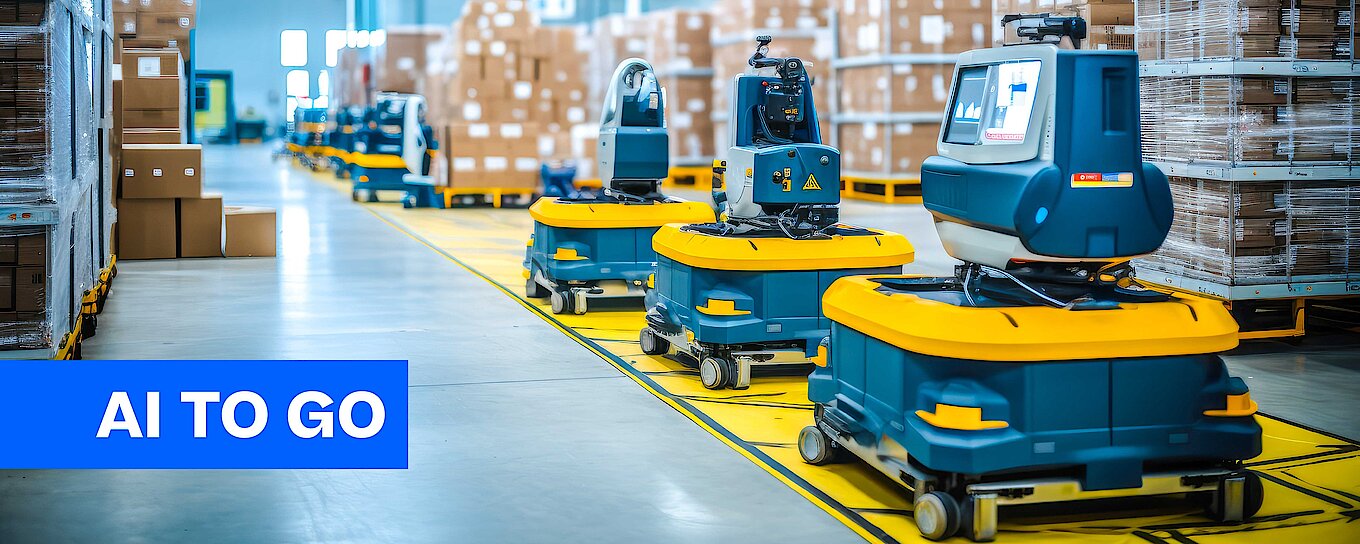As e-commerce continues to grow and customer expectations shift toward faster, more efficient delivery, warehouses and fulfillment centers have become the backbone of modern supply chains. In this rapidly evolving environment, Artificial Intelligence (AI) and automation are revolutionizing how warehouses operate. From streamlining inventory management to deploying autonomous robots, AI is reshaping the future of fulfillment centers.
In this post, we explore how AI-powered automation is transforming warehouse operations and creating more responsive and efficient supply chains.
The rise of AI in warehouse automation
AI-driven warehouse automation offers the ability to optimize every aspect of fulfilment - from product storage to order picking and packing. Using machine learning algorithms, AI can analyse large volumes of data to improve inventory accuracy, enhance operational efficiency, and reduce costs.
According to a report by Gartner, more than 50% of large global companies are expected to have incorporated AI-driven warehouse automation into their supply chains by 2023.
This shift is largely driven by the need for faster order fulfillment and improved operational efficiency, both of which are critical in meeting the demands of today’s consumers.
Enhancing inventory management with AI
One of the key applications of AI in warehouses is inventory management. Traditional inventory systems often struggle with inaccuracies, leading to stock shortages, overstocking, or delayed shipments. AI-powered inventory systems, however, can predict demand more accurately by analysing real-time data and historical trends. This allows companies to maintain optimal stock levels, avoid overstocking, and ensure that products are available when customers need them. By integrating AI with warehouse management systems, companies can better predict stock levels and prevent costly disruptions.
AI-powered robotics: The future of order fulfillment
AI-driven robotics is another game-changer for warehouses and fulfillment centers. Autonomous robots, powered by AI, can handle repetitive tasks such as picking, packing, and sorting, significantly increasing efficiency and reducing human error. These robots use machine learning algorithms to navigate warehouse floors, identify products, and even assist in product transportation.
Amazon is a pioneer in using AI-powered robotics for warehouse automation. In their fulfillment centers, AI-driven robots work alongside human employees to optimize order picking and reduce the time it takes to process and ship orders. This level of automation allows Amazon to deliver on its promise of fast and accurate order fulfillment, even during peak seasons.
Improving efficiency with predictive maintenance
Warehouse automation doesn’t stop at inventory management and robotics. AI also plays a crucial role in predictive maintenance for warehouse equipment. By analyzing sensor data and machine performance metrics, AI can predict when a machine is likely to fail and recommend maintenance before a breakdown occurs. This helps prevent costly downtime and ensures that the warehouse operates at peak efficiency.
AI and human collaboration: A hybrid workforce
Despite concerns that AI and automation might eliminate jobs, the reality is that AI is creating a hybrid workforce, where machines and humans work together to improve productivity. While AI-driven robots handle repetitive and time-consuming tasks, human workers are freed up to focus on more complex tasks that require problem-solving and critical thinking.
In fact, AI can enhance employee performance by providing real-time insights and recommendations that help workers make better decisions. For instance, AI-enabled augmented reality (AR) tools can guide warehouse employees in picking the correct items faster and with greater accuracy. This combination of human expertise and AI technology leads to a more efficient and scalable fulfillment process.
Key lessons for leveraging AI in warehouse automation
- Invest in AI-driven robotics: Autonomous robots powered by AI are revolutionizing order fulfillment by handling repetitive tasks more efficiently than humans. Investing in these technologies can significantly reduce operational costs and increase throughput.
- Optimize inventory with AI: AI-driven inventory management systems provide real-time insights into stock levels, reducing waste and ensuring that products are available when customers need them.
- Embrace predictive maintenance: Predictive maintenance, powered by AI, ensures that equipment remains operational, reducing downtime and improving warehouse efficiency.
- Collaborate with AI: The future of warehouse automation is not just about replacing humans but enhancing human capabilities through AI collaboration. By leveraging AI, companies can create a more productive hybrid workforce.
AI as the future of fulfillment centers
As supply chains become more complex and customer expectations for fast delivery grow, AI-powered warehouse automation is no longer a luxury but a necessity. From optimizing inventory management to improving order fulfillment through robotics, AI is transforming how warehouses operate. The future of fulfillment centers will be defined by AI’s ability to drive efficiency, reduce costs, and enhance collaboration between humans and machines.
For companies looking to stay competitive in the ever-evolving e-commerce landscape, embracing AI-driven warehouse automation will be key to achieving faster, more efficient, and more resilient operations.
Don't wanna miss more insights and updates about the AI landscape? Subscribe for our LinkedIn Newsletter!




